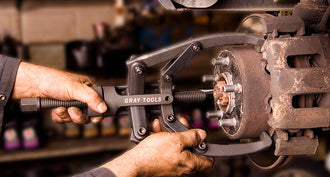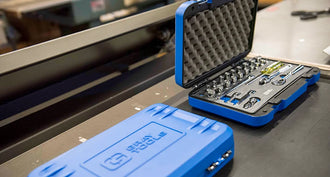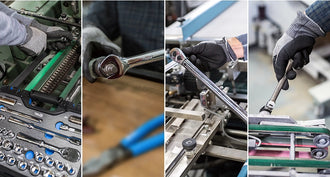The Gray Tools Story-Expansion Into Hand Tools
- Gray Tools Official Blog
- 24 Feb, 2016

This is an excerpt from the book "Gray Tools-A 100 Year History" written by Alex and Gail Gray.
In 1919, when sales of war machinery to the Canadian government declined, the company turned to selling ball bearings. It was felt that these could be sold into a large segment of the industrial market, since they could be used individually or incorporated into many other devices and machines.
Because of this significant shift in the product line, the company changed its name to better advertise its wares. It was now known as the Gray Ball Bearing Company Limited.
To further increase sales, a second product line was introduced, which included water-supply systems and power pumps that were equipped with high-quality ball bearing to minimize friction.
Other sidelines of the factory included repair work on damaged machines and the manufacturing of any specialized machinery that the engineering department could design and build. No job was too large or too small for the company to handle.
The first hand-tool catalogue was printed in 1922. There were two editions of the catalogue, which were identical except for the cover. The Canadian edition Gray-Toronto was issued by the Gray Ball Bearing Company Limited. The American edition Gray-Batavia was issued by Gray Machine and Parts Corporation of Batavia, New York.
The catalogue listed 302 different hand tools including sockets, wrenches, handles, extension bars, universal joints, and associated parts. In addition, many wrench sets were produced specifically for certain cars made at that time.
For example, set #6038 contained twenty wrenches of different size and shape; this set was to be sold to the garage servicing a Ford car or truck. Set #6039 was to be sold to the Ford car owner and contained four wrenches.
In 1923, the company introduced two major innovations to its manufacturing process. These were well described in the 1924 catalogue:
"In the automotive trade, the majority of the Wrenches used by the garage man require the outside diameter to be as small as possible, so that the wrench socket can reach the nut in the many hard-to-get-at parts of an automobile. This makes the socket wall, of necessity, very thin; therefore the material entering into these Wrenches will be the prime factor in obtaining durability.
We have, after consultation with several of the largest steel mills, decided to manufacture our Wrenches, where the socket wall requires to be particularly thin, from the best steel procurable, viz: Chrome Nickel Steel.
We have further decided to make these wrenches by a Drop Forged Method, which will produce a wrench with no weld, no join, and from one piece of Chrome Nickel Steel. All solid Socket Wrenches up to and including 3/4-inch opening will be made by this method."
So, by 1927, the company advertised itself as being "manufacturers of Wrenches, Gear and Wheel Pullers, Starting Cranks, Automobile Parts and Heavy Duty Stampings".



